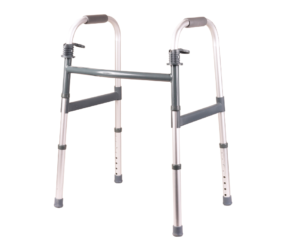After your surgery, the nursing team will help you put on some compression stockings. While not the most attractive accessories, they help control swelling and prevent blood clots. You should wear them during the day for 30 days after surgery, so you may like to purchase an additional pair. We don’t recommend any specific level of compression – so buy whatever is most comfortable for you.
These stockings are notorious for being challenging to put on single-handed, so you may also benefit from one of the cheap but effective devices you can buy, for example on Amazon.

If you feel you are ready to graduate to a cane – first make sure it is the right height for you. Stand up straight with your arms by your sides. A cane of the right height will line up with the crease of your wrist. To walk with the cane – hold it on your non-operated side and move it forward at the same time as your operated leg.








